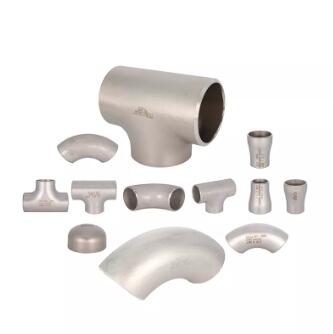Choosing the Right Stainless Steel Socket Pipe Fitting: A Guide for Engineers and Contractors
2024-08-22
Introduction
Selecting the right stainless steel socket pipe fitting is crucial for ensuring the safety, efficiency, and longevity of your piping system. With various types, sizes, and specifications available, making the right choice can be challenging, especially when dealing with complex or high-stakes applications. In this blog, we'll guide you through the key factors to consider when choosing stainless steel socket pipe fittings.
Material Grades: Understanding Stainless Steel Options
Stainless steel comes in various grades, each with unique properties that make them suitable for different applications:
1. 304 Stainless Steel: This is the most common grade, known for its good corrosion resistance, ease of fabrication, and overall versatility. It’s suitable for most general-purpose applications, including water systems, food processing, and chemical transportation.
2. 316 Stainless Steel: Known for its superior corrosion resistance, particularly against chlorides and other industrial solvents, 316 stainless steel is ideal for marine environments, chemical processing, and medical applications.
3. 304L and 316L Stainless Steel: These are low-carbon versions of the 304 and 316 grades, offering improved weldability and resistance to intergranular corrosion, making them perfect for welding-intensive projects.
Pressure Ratings and Schedules
When selecting stainless steel socket pipe fittings, it's essential to consider the pressure ratings and schedules. These specifications determine the fitting’s ability to withstand internal pressure and ensure compatibility with the pipe system. Key factors include:
- Schedule Number: Indicates the wall thickness of the pipe, with higher schedules meaning thicker walls. Ensure that the fitting matches the schedule of the pipe for optimal performance.
- Pressure Rating: Expressed in PSI (pounds per square inch), this rating indicates the maximum pressure the fitting can handle. Choose a fitting with a pressure rating that exceeds the operating pressure of your system to ensure safety and reliability.
Compatibility with Piping Systems
Compatibility is crucial when selecting socket pipe fittings. Consider the following:
- Pipe Material: Ensure the fitting is compatible with the pipe material to prevent galvanic corrosion and ensure a strong, leak-proof connection.
- End Connections: Match the end connections (threaded, socket weld, etc.) to the piping system to facilitate easy installation and maintenance.
Industry Standards and Certifications
Choosing fittings that meet industry standards and certifications is essential for ensuring quality and compliance with safety regulations. Look for fittings that comply with standards such as:
- ASME (American Society of Mechanical Engineers)
- ANSI (American National Standards Institute)
- ISO (International Organization for Standardization)
These standards ensure that the fittings are manufactured to precise specifications and have undergone rigorous testing for performance and safety.
Consideration of Environmental Factors
The environment in which the fittings will be used plays a significant role in material selection. For example:
- Corrosive Environments: In environments with high levels of salt, chemicals, or moisture, 316 or 316L stainless steel is often preferred for its superior resistance to corrosion.
- High Temperatures: If the system will be exposed to high temperatures, ensure the stainless steel grade can withstand the thermal stresses without losing strength or integrity.
Cost vs. Performance
While cost is always a consideration, it’s essential to balance it with performance. Opting for cheaper fittings might save money initially, but could lead to higher maintenance costs, system failures, or safety risks in the long run. Investing in high-quality stainless steel socket pipe fittings that match the specific demands of your application is a wise long-term strategy.
Conclusion
Choosing the right stainless steel socket pipe fitting involves careful consideration of material grade, pressure rating, compatibility, industry standards, environmental factors, and cost. By understanding these key factors, engineers and contractors can make informed decisions that ensure the safety, efficiency, and durability of their piping systems. Whether it's for a small-scale project or a large industrial installation, selecting the appropriate fittings is a critical step in achieving long-term success.



